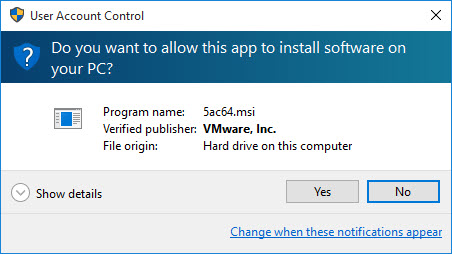To manually remove the hcmon.sys driver from the server: Right-click My Computer and click Manage. Click Device Manager. Click View Show hidden devices. Double-click Non-Plug and Play Drivers. Right-click VMware hcmon and click Uninstall. Rename the C:windowssystem32drivershcmon.sys file to hcmon.
VMware Remote Console | 08 December 2015 | Build 3250412 Check for additions and updates to these release notes. Last Document Update: 10 February 2016 |
Reset Windows Server RDS 120 Day Grace Period 17th July 2020 Upgrade Kali Linux 2019.x to Kali Linux 2020.x 20th February 2020 Simple Postfix Hardening 30th May 2019. To manually remove the hcmon.sys driver from the server: Right-click My Computer and click Manage. Click Device Manager. Click View Show hidden devices. Double-click Non-Plug and Play Drivers. Right-click VMware hcmon and click Uninstall. Rename the C: windows system32 drivers hcmon.sys file to hcmon.sys.old. Failed to install the hcmon driver. Now I've come across several simple things that should help me, but it didn't: remove vsphere client, install remote console and reinstall vsphere client; install with extra admin priviliges; Do a register workaround (enable HCmon, install, remove regkey). Failed to install the HCmon driver Workaround: Go to Task Manager, Services tab, and stop the VMUSBArbService. Then, proceed with installation. Alternatively, launch the.exe installer from a command prompt window that you opened with Administrator privileges. VMware Remote Console does not launch on macOS 10.13.
What's in the Release Notes
 The release notes cover the following topics:
The release notes cover the following topics: What's New
VMware Remote Console 8.0 provides complete functionality on virtual machine operations and settings to vSphere administrators, but only limited functionality is available on virtual machine operations such as console, mouse and keyboard operations to vRealize Automation users.
VMware Remote Console 8.0 supports:
- vRealize Automation 6.2.3 with console proxy
- Smart cards
- Auto Update for Windows
- 32-bit Windows
Compatibility and Installation
VMware Remote Console and host OS version compatibility
VMware Remote Console is compatible with the following 64-bit and 32-bit Windows host operating systems:
- Windows Server 2012 R2
- Windows Server 2012
- Windows Server 2008 R2 SP1
- Windows Server 2008 R2
- Windows 7
- Windows 8.1
- Windows 8
- Windows 10
VMware Remote Console is also compatible with the following Mac host operating systems:
- Apple OS X 10.8 (Mountain Lion)
- Apple OS X 10.9 (Mavericks)
- Apple OS X 10.10 (Yosemite)
- Apple OS X 10.11 (El Capitan)
Installation Notes for This Release
Hcmon Detected Unrecognized Usb Driver
Read the following documentation for guidance about installing and using VMRC:

Known Issues
This release has the following known issues for Windows OS:

Running VMRC without a URL will fail.
Workaround: Open a URL of the form: vmrc://[<user>|(<ticket-type>:<ticket>)@]<host>[:<port>]/?moid=<VM-id>.VMRC displays an empty, black console when connecting to a virtual machine.
Workaround: None- VMRC might prompt The keyboard hook timeout value is not set to the value recommended by VMware Remote Console when connected to a virtual machine.
Workaround: Click OK to update the value and log out of Windows to ensure the update takes effect. - Installing VMRC client on Windows 10 might fail with an error Failed to install the HCmon driver.
Workaround: Run the elevated command prompt as an Administrator.
Failed To Install Hcmon Driver Windows 10 32-bit
This release has the following known issues for Apple OS X:
- VMRC might not add new devices such as DVD and CD-ROM drives or an existing virtual hard disk to a virtual machine.
Workaround: None - VMRC does not display sound card settings.
Workaround: None